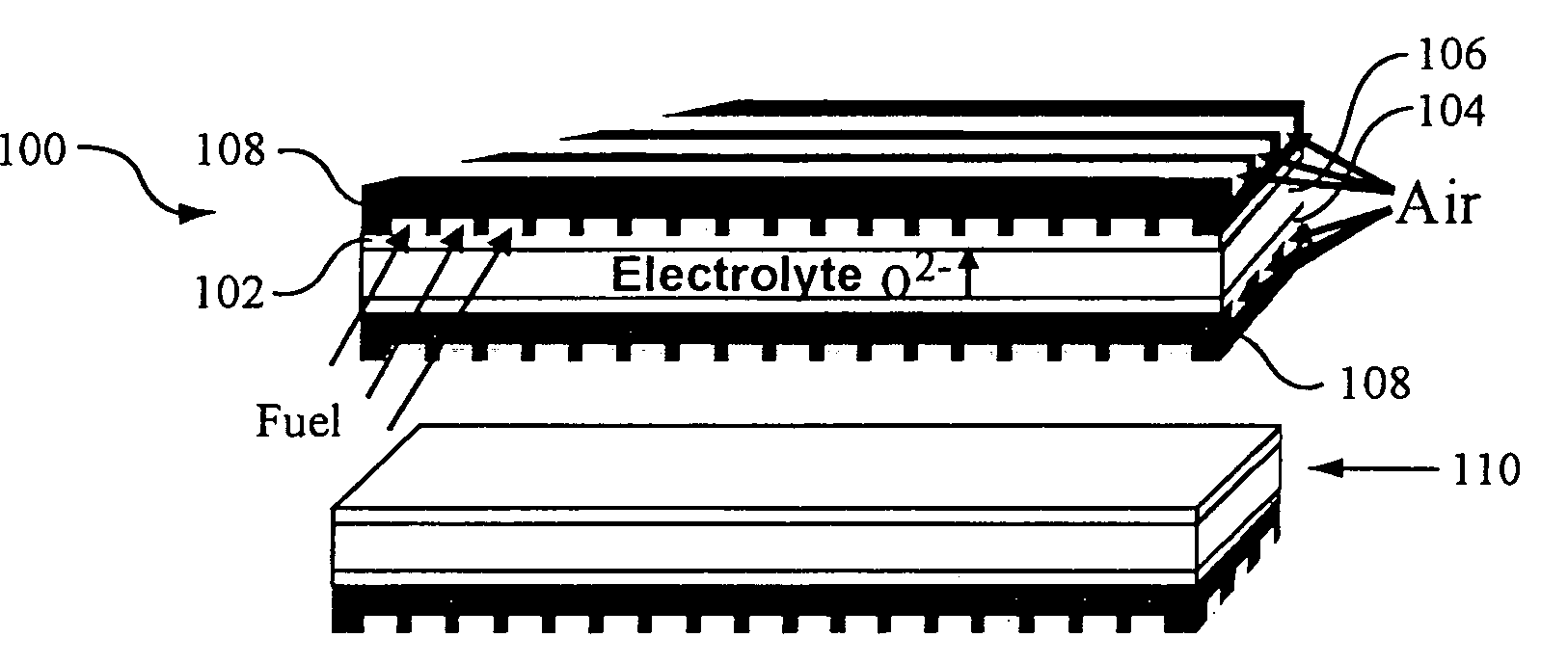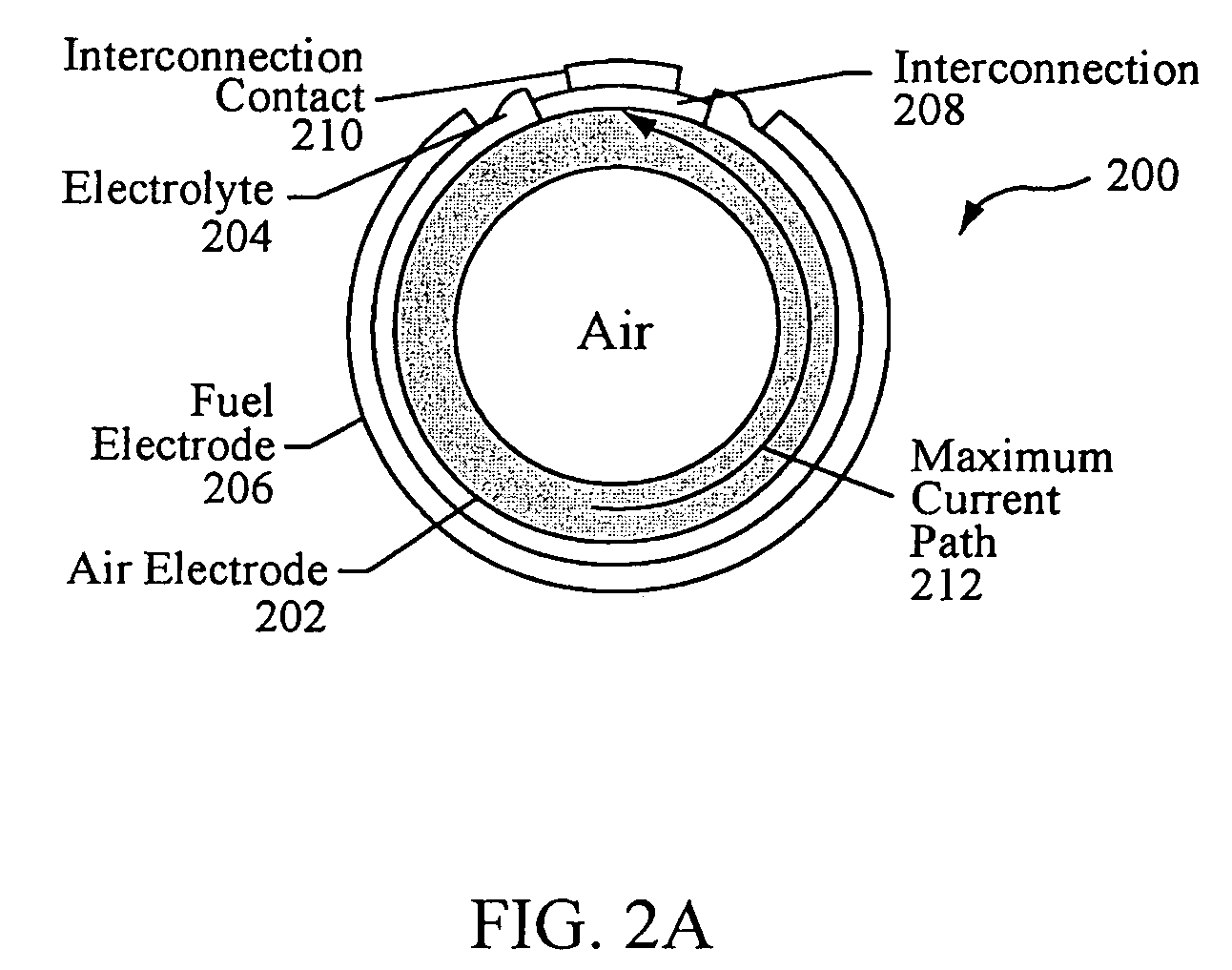Structures and fabrication techniques for solid state electrochemical devices
a technology of electrochemical devices and structures, applied in the field of solid-state electrochemical devices, can solve the problems of inherently high electrical resistance, difficult to maintain, and high cost of ceramic materials used in conventional solid-state electrochemical device implementations, and achieve the effects of reducing resistive losses in the device, high electronic conductivity, and high strength
- Summary
- Abstract
- Description
- Claims
- Application Information
AI Technical Summary
Benefits of technology
Problems solved by technology
Method used
Image
Examples
example 1
Co-firing of YSZ Film on Inconel-Alumina Substrate
[0078] 50 vol % Al2O3 (AKP-30) and 50 vol % Inconel 600 (Powder Alloy Corp.) with a small amount of binder (XUS 40303 from Dow Chemical Company) were mixed in water and dried. The resulting powder was ground in a mortar and pestle and sieved to ≦100 μm. 5 g of the powder was pressed to 5000 psi in an 1.5 in steel die. A thin layer of YSZ powder (Tosoh Corp.) was applied to one surface of the pressed disk. The coated disk was again pressed to 6000 psito increase the green density of the YSZ film and enhance adhesion. The disk was placed film side down in a molybdenum furnace under 2 psi flowing He. The furnace was manually heated to 450° C., and then at a rate of 5° C. / min to 1350° C., held for 4 hr, and then cooled at a rate of 5° C. / min. The resulting bilayer shrank 10%. The film side was shiny and clear, the uncoated side was slightly pinkish (chromia scale). FIGS. 6A and 6B show a scanning electron microscope (SEM) edge view of t...
PUM
| Property | Measurement | Unit |
|---|---|---|
| thick | aaaaa | aaaaa |
| temperature | aaaaa | aaaaa |
| temperatures | aaaaa | aaaaa |
Abstract
Description
Claims
Application Information
 Login to View More
Login to View More - R&D
- Intellectual Property
- Life Sciences
- Materials
- Tech Scout
- Unparalleled Data Quality
- Higher Quality Content
- 60% Fewer Hallucinations
Browse by: Latest US Patents, China's latest patents, Technical Efficacy Thesaurus, Application Domain, Technology Topic, Popular Technical Reports.
© 2025 PatSnap. All rights reserved.Legal|Privacy policy|Modern Slavery Act Transparency Statement|Sitemap|About US| Contact US: help@patsnap.com



